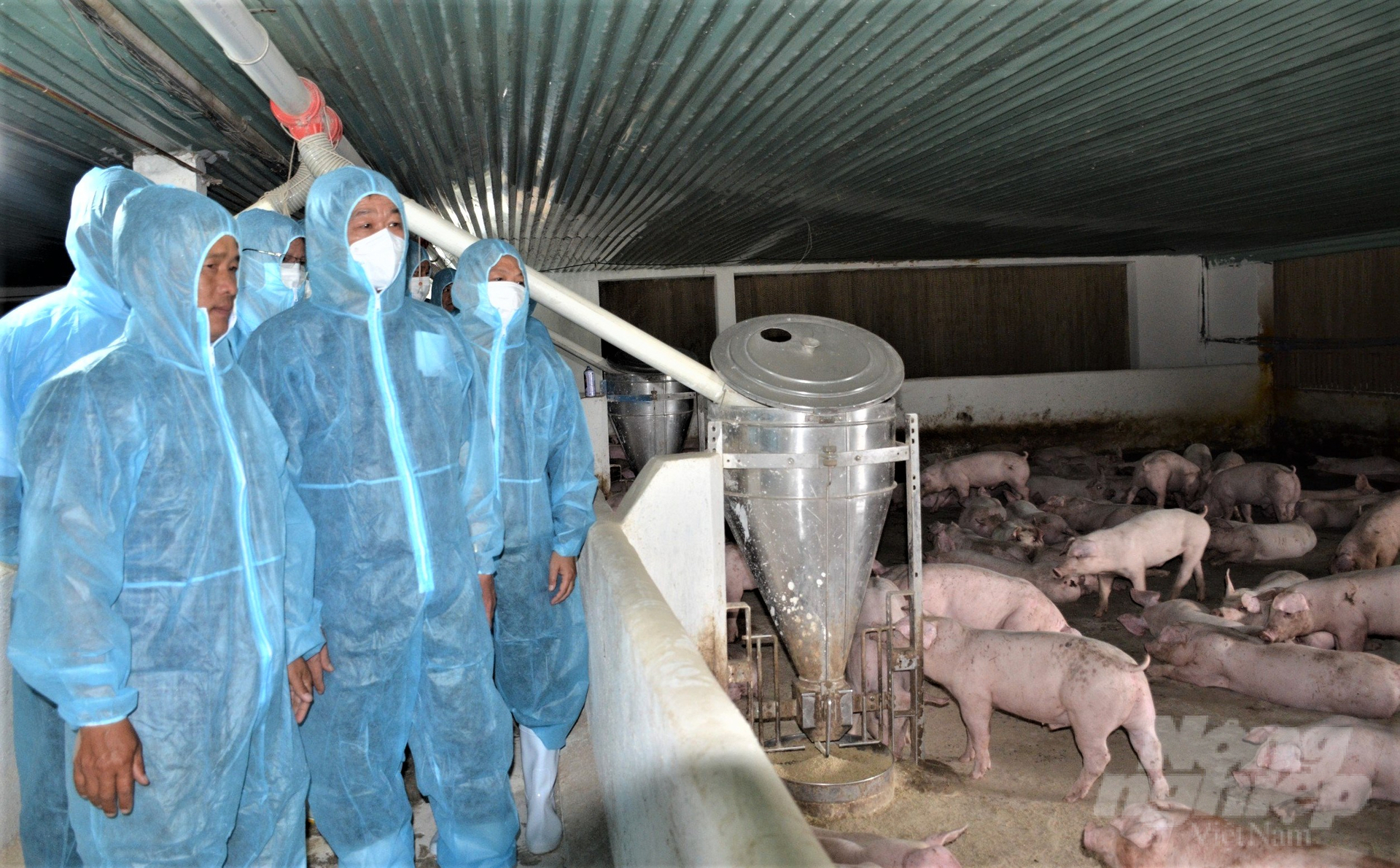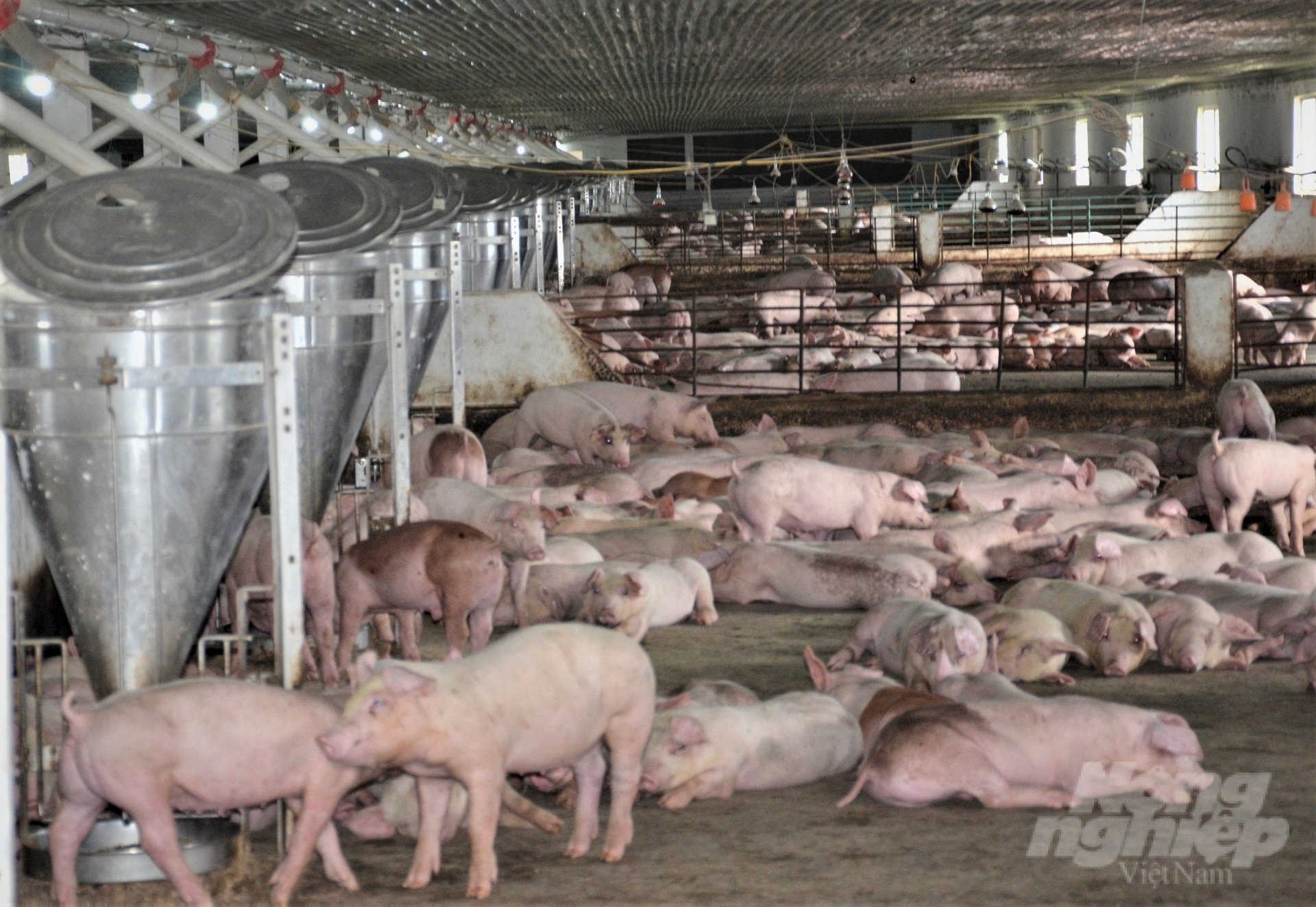November 24, 2025 | 22:45 GMT +7
November 24, 2025 | 22:45 GMT +7
Hotline: 0913.378.918
November 24, 2025 | 22:45 GMT +7
Hotline: 0913.378.918

Leaders of Kien Giang province visited a concentrated pig farm in a closed chain in Giang Thanh district. Photo: Trung Chanh.
Kien Giang is a province with a large arable land area and diverse agricultural production, creating a rich source of food materials for livestock development, especially pig and cattle farming.
In the past, for generations, farming households relied on raising a select few pigs, buffaloes, and cows to not just sustain themselves but also tap into the abundant food resources available midst the vast landscapes. This practice served the dual purpose of ensuring a regular food supply for the family while also bolstering their income through the sale of excess animals or their byproducts. However, in recent years, a significant decline in the prevalence of smallholder farming has been witnessed, marking a notable departure from the long-standing tradition.
Mr. Nguyen Thanh Duc, Director of Kien Giang Department of Animal Husbandry and Veterinary Medicine said, the province identifies farms as an important resource to grow herd size and increase production value. This is also an area where the province still has much room for development. Therefore, it is necessary to pay attention to investment and proper support in terms of resources, mechanisms, policies, investment and business procedures...
Recently, the agricultural sector of the province has worked with a number of large investment enterprises in the livestock sector such as: C.P, Mavin, CJ... about the breeding plan, orientation and strategy of the unit in Kien Giang in order to Determine the focus and resources to strongly develop the pig herd, aiming to achieve the annual herd growth target of Sustainable livestock development project of the province.
Develop concentrated livestock production in chains or chain links from farm to consumption. Especially businesses with closed chains or links from breeds, feed, farms, distribution, and consumption according to the 3F chain (Feed - Farm - Food).
Thereby, making an important contribution to the development of the province's livestock industry, exploiting the potentials and strengths of some localities that still have room for land funds and rich sources of feed ingredients such as Giang Thanh, Kien Luong and Hon Dat districts.
The Kien Giang Veterinary Sector actively cooperates with districts and cities to strengthen the work of supplementing vaccinations with vaccines for cattle, poultry, and livestock, providing free Benkocid chemicals to farmers to clean livestock barns.
Concentrating resources, and solutions to control the risk of African swine fever, avian influenza and skin rash on buffaloes and cows.

Farming concentrated on a 3F closed chain is an important resource to increase the size of the herd and has a lot of room for development in Kien Giang province. Photo: Trung Chanh.
Support and replicate the investment model of livestock development in the direction of farms and industry, focusing on developing advantageous livestock such as pigs, cows, and poultry. Diversify livestock types to promote the advantages of each region and the diverse needs of each market, applying biosafety, food safety and good husbandry practices - (VietGAHP) breeding processes.
Currently, in Kien Giang province, there are large enterprises investing in developing livestock farms such as C.P Livestock Joint Stock Company. Vietnam - Kien Giang Branch, Mavin Group, C.J Vina Agri Company, Techpal Joint Stock Company.
In addition, there are many farms of livestock farmers processing livestock for businesses according to a closed process, ensuring biosecurity and being provided with timely information about disease developments, proactively responding and maintaining good livestock farming activities. Large livestock farms currently supply 20,000 - 30,000 pigs/month to the market in the province. Developing concentrated farms in farming has helped Kien Giang province's pig population increase after a sharp decline due to the impact of African swine fever. Striving to the end of 2023, the pig herd will reach from 251,000 to 266,000 heads, an increase of about 15% compared to 2022.
Dong Nai will support livestock-raising households and small-scale farms with relocation costs of VND 4 million/facility, and medium-scale and large-scale farms are supported with relocation costs of VND 6 million/facility.
Regarding investment loans for new livestock projects, 100% of the loan interest rate according to the loan contract will be supported for the first 2 years and 50% of the loan interest rate in the 3rd year. The interest rate support for 3 years must not exceed VND 300 million for large-scale farms, VND 150 million for medium-scale farms, and VND 60 million for small-scale farms.
Translated by Hoang Duy

(VAN) Green transition is crucial for the Mekong Delta amid climate change and stricter standards, offering a path toward sustainability.

(VAN) Dong Thap promotes agricultural restructuring, forms large specialized farming zones, raises the value of agricultural products and develops toward ecological and high-tech directions.
/2025/11/22/4018-4-213342_747.jpg)
(VAN) The Mekong Delta Agricultural Experts Club has attracted 143 experts and researchers to participate in providing consultancy and contributing initiatives to the development of one million hectares of high-quality rice.

(VAN) Ca Mau’s development of OCOP products opens a path to increasing cooperatives value, helping boost income, expand markets, and affirm collective economy's role.

(VAN) Turning seemingly ordinary coconut shells into unique jewelry and artwork, Nguyen Bang Nhi spreads the value of local culture through her brand, Cocohand.

(VAN) Results from the Sustainable Durian Model Project in Dak Lak have confirmed the critical role of Yara Viet Nam in transferring advanced nutritional solutions to farmers.

(VAN) In Tuyen Quang province, livestock farmers have introduced effective models and innovative practices that significantly strengthen African Swine Fever prevention and control efforts.